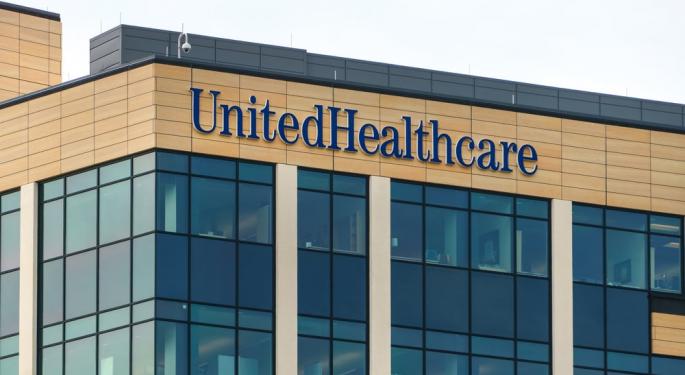Healthcare's 2025 Stock Crash Could Be A 2030 Windfall
It's been a rough ride for healthcare investors in 2025. While the S&P 500 is cruising along with a 8.4% year-to-date gain, the healthcare sector has actually posted a negative return of 1.3%, making it the worst performer so far. So, what's dragging it down? A cocktail of regulatory stress and trade tensions is mostly to blame.
- Check out the real-time price action of UNH stock here.
But here's the twist: what looks like a losing bet today might just be tomorrow's big winner. The underlying story is simple but powerful — America is getting older.
And with age comes greater demand for healthcare services, senior housing, chronic care, and end-of-life support. If you take a step back from the short-term noise, the long-term demographic trends paint a promising picture for savvy investors.
The U.S. population aged 65 and over is booming, and it's reshaping the landscape. The ratio of working-age adults to retirees is 2.8 to one in 2025, a figure that will decline to just 2.2 by 2055, according to the Congressional Budget Office. That shift isn't just a stat — it's a tidal wave of demand heading straight toward healthcare providers, insurers, and real estate investors focused on senior care.
This demographic tailwind makes healthcare a classic contrarian play: out of favor now, but backed by undeniable future growth. It's why long-term thinkers are still bullish — especially on specialized healthcare real estate and insurance businesses serving older Americans.
Why The Healthcare Sector Has Been Underperforming
Yes, regulations have thrown a wrench in things. On the state level, California and Oregon are among those cracking down on private equity's influence in clinical decisions. New laws make it tougher for corporate-backed groups to scale operations, especially in areas like dentistry and physician management. That limits growth and puts pressure on investor returns.
Meanwhile, federal policy isn't helping either. President Donald Trump's push to align U.S. drug prices with those overseas has made pharmaceutical companies jittery, especially after Eli Lilly got dropped from a major formulary in favor of Novo Nordisk. Add to that fresh tariffs on Chinese medical imports — driving up production costs and shrinking margins — and you've got a tough short-term environment.
NIH funding cuts and rising labor costs are another headache. Post-pandemic Medicaid enrollment remains high, straining both state and federal budgets. The squeeze is very real across research, staffing, and infrastructure.
Healthcare Poised For A Boost From Rising Longevity
But even with all these headwinds, the demographic tailwind is hard to ignore. The U.S. population aged 80 and older is projected to see steady and sizable growth in the coming years. That's a massive boom for senior housing, skilled nursing facilities, and outpatient medical centers — the kind of properties healthcare-focused REITs are betting on. These investments not only sidestep regulatory uncertainty but also align perfectly with long-term care trends.
“We're finally past the demographic drag of the ‘baby bust' generation. The 80-plus population is set to grow nearly 5% annually through 2030," Jonathan Hughes, managing director of REIT equity research at Raymond James, said in a recent interview for Nareit.
The aging trend, combined with capital discipline and technological modernization, gives healthcare REITs an advantage.
"Technology will help bridge the margin gap in senior housing, offering better revenue management tools and lower operating costs," Omotayo Okusanya, managing director, US. REIT equity research at Deutsche Bank, added.
Among individual stocks, LTC Properties (NYSE:LTC) is well positioned with a balanced portfolio of senior housing and skilled nursing assets. It is a high-yield stock benefitting from long-term triple-net leases. National HealthCare Corporation (NYSE:NHC), meanwhile, brings a vertically integrated model of rehab and long-term care across multiple states.
On the insurance side, Molina Healthcare (NYSE:MOH) remains focused on managed Medicaid and Medicare Advantage populations. This company, which has nearly as much cash on the balance sheet as its market cap, offers defensive exposure to aging demographics while maintaining strong cost discipline.
So while healthcare might look bruised and battered today, those willing to take the long view could see it as one of the most promising rebound stories in the market. The sector's future isn't just about recovery — it's about riding the rising tide of longevity itself.
Read Next:
Image: Shutterstock
© 2025 Benzinga.com. Benzinga does not provide investment advice. All rights reserved.
Posted-In: demographics healthcareEquities REIT Health Care Top Stories Markets Insurance



